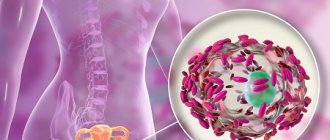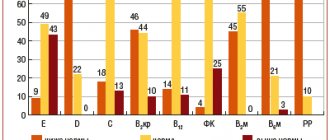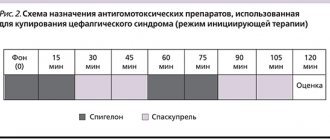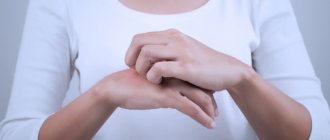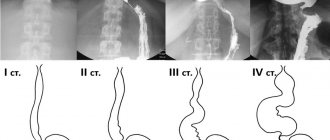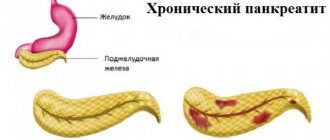Methods of infection with leptospirosis
Humans can only become infected with leptospirosis from animals. No sick person becomes a source of leptospirosis. Among animals, leptospirosis is transmitted through contaminated water and food or through fleas and ticks. These parasites can also transmit infection to humans. There are two main foci of leptospirosis infection - natural and agricultural. The natural focus includes wild rodents and insectivores living in humid forest and forest-steppe zones. The main animals of the natural focus of leptospirosis infection are:
- harvest mouse;
- shrew;
- vole;
- gray rat;
- wood mouse;
- hedgehog;
- marmot;
- fox;
- less often - amphibians.
Infection with leptospirosis in an agricultural outbreak occurs due to domestic animals and small rodents living on livestock farms. The main animals of the agricultural focus of leptospirosis infection are:
- cattle (cow);
- small livestock (sheep, goat);
- horse;
- pig;
- dog;
- "domestic" black rat;
- house mouse;
- less often - poultry (ducks, geese).
All animals act as carriers and carriers of leptospirosis infection. The parasite multiplies in the animal's body, remaining for a long time in the kidneys. For many months (up to two years), leptospira are excreted in the animal’s urine into the environment, where they infect soil, water resources and surrounding objects. The most dangerous are small bodies of water (ponds, swamps, small lakes and rivers), where a large concentration of Leptospira is created. In large bodies of water, the urine of infected animals is diluted with large amounts of water, reducing the concentration of Leptospira to a minimum.
Leptospirosis infection can enter the human body in several ways. The main methods of transmission of leptospirosis infection are:
- contact;
- nutritional;
- aspiration;
- transmissible.
Contact route of infection with leptospirosis
The contact route of infection with leptospirosis is the most common. The parasite enters the human body through damaged skin and mucous membranes of the body that come into contact with contaminated surfaces and liquids. Infection occurs during agricultural work in wet meadows and pastures, on farms and meat processing plants. Infection with leptospirosis also occurs when caring for sick animals. There is a possibility of infection by contact through infected meat and blood of sick animals. People who most often become infected with leptospirosis through contact are:
- water meadow workers;
- rice farm workers;
- pet breeders;
- shepherds;
- milkmaids;
- meat processing plant workers;
- people working in slaughterhouses;
- veterinarians;
- livestock specialists;
- people working in dog kennels;
- people burying dead animals;
- taxidermists (people who make stuffed animals);
- deratizers (people who destroy rodents).
Superficial microtraumas (abrasions, scratches, small wounds) and undressed wounds become ideal entry points for leptospirosis infection. Even short-term contact of damaged skin with a source of Leptospira leads to infection of the body.
Pathogenesis
As a rule, the infection enters the body through wounds, mucous membranes, the gastrointestinal tract, and the genitourinary system. You can become infected through soil, water, and food. The incubation period in most cases lasts from 4 days to 2 weeks. However, sometimes it can last for a month. Most often, infections occur in late summer and autumn.
After infection, several phases of disease development are determined. In the first phase, the causative agents of the disease penetrate into the blood through the affected mucous membranes and skin, after which the leptospires invade the kidneys, liver, spleen, and adrenal glands, where they actively reproduce. This is the incubation period of the disease.
This is followed by a phase of generalized infection . During this period, repeated leptospiremia occurs, after which the pathogen enters the liver, kidneys, adrenal glands, and membranes of the brain. During this period of the disease (initial), Leptospira parasitizes on the surface of cells.
In the toxinemia , the disease progresses. The endothelium of the capillaries is damaged, as a result of which their penetration increases. Hemorrhagic syndrome develops , the kidneys, liver, and adrenal glands are affected.
During the formation phase of the non-sterile stage of immunity, antibodies appear in the blood, and the process gradually begins to fade.
In the sterile stage of immunity, humoral immunity is combined with local organ and tissue immunity. At this stage, the healing process occurs.
However, there are several varieties of the pathogen, so immunity to one type does not provide protection against other varieties.
Prevention of leptospirosis
Leptospirosis infection can be prevented by limiting contact with carriers of the disease, which are infected rodent pests, farm and domestic animals. Preventive measures to combat this disease can be divided into two groups. The first category includes rules for which the person himself is responsible. The second group includes activities, the organization and control of which is the responsibility of sanitary and epidemiological control authorities and health care institutions. The rules for personal prevention of leptospirosis are:
- timely vaccination of animals;
- detection and treatment of disease in domestic animals;
- extermination of rodents and prevention of their appearance;
- implementation of preventive rules during agricultural work;
- compliance with safety rules when relaxing in nature;
- compliance with sanitary and hygienic requirements at the workplace in case of professional belonging to a risk group;
- immunization against leptospirosis.
Vaccination of animals against leptospirosis
Immunization of animals against leptospirosis is an effective measure that will protect humans and animals from this disease. Vaccination methods depend on the conditions in which the animal was acquired. If the owner knows for sure that the animal is not infected with leptospira (when purchased from a nursery or from a breeder), a standard vaccination procedure is carried out. If the animal was purchased by hand or picked up on the street, passive immunization is carried out, in which a special hyperimmune serum is placed before the vaccine.
Detection and treatment of leptospirosis in pets
Pet owners are at risk for leptospirosis, as the source of infection is often a sick animal. The main routes of infection are skin contact with water that is contaminated with secretions, saliva or urine of a sick animal. Timely identification of the symptoms of the disease in an animal and adequate treatment will allow a person to avoid infection with Leptospira.
Classification
There are two forms of the disease - icteric and anicteric .
- Jaundice - the incubation period in this case lasts 1-2 weeks. It begins acutely, body temperature can rise to 40 degrees, and a pronounced feeling of weakness appears. Around day 2-3, the liver enlarges, and in some cases, the spleen. I am worried about pain in the calf muscles, icterus appears in the sclera and skin. Oliguria develops around day 4-5 , later anuria . Hemorrhagic syndrome appears. Tachycardia is a concern , infectious myocarditis . This form of the disease is sometimes called “infectious jaundice.”
- Anicteric - the incubation period lasts 4-10 days. The patient experiences weakness, body temperature, weakness, develops meningeal signs, disseminated intravascular coagulation syndrome, oliguria, and liver enlargement.
According to the severity of the disease, three degrees are distinguished:
- mild – mild intoxication, internal organs are not affected;
- moderate – severe intoxication, all the symptoms of leptospirosis are present;
- severe - damage to internal organs occurs.
Tests and diagnostics
During the diagnostic process, the doctor examines and interviews the patient, assesses the presence of visual signs of leptospirosis.
To establish a diagnosis, the following studies may be performed:
- General analysis of urine and blood, biochemical blood test.
- Spinal tap.
- PCR or RT-PCR testing.
- X-ray of the chest organs.
- Microscopic analysis for leptospirosis in humans - a microscopic examination of blood, urine and cerebrospinal fluid is carried out in order to detect the causative agent of leptospirosis in them.
- Inoculation of biomaterial on nutrient media to determine the pathogen.
- A serological blood test for leptospirosis, during which the increase in the amount of antibodies to leptospira in the blood serum is determined.
- ELISA method for determining IgM antibodies.
- Coagulogram, ultrasound examination, lumbar puncture.
Etiology
The genus Leptospira of the Leptospiraceae family includes two species - pathogenic (L.interrogans) and saprophytic (L.biflexa). Leptospira are spiral-shaped, motile microorganisms 6–15 µm long, 0.1–0.25 µm thick, gram-negative, do not form spores or capsules. Leptospires are poorly stained with aniline dyes, and therefore in the living state they are usually studied in a dark field.
Leptospira are hydrobionts and quickly die when dried out. They are sensitive to sunlight, high temperatures, and disinfectant solutions. At a temperature of 55 °C, leptospira die in 25–30 minutes, and at a temperature of 100 °C - almost instantly. In open water bodies and moist soil, leptospira can remain viable from 2 weeks to 3 months or more, on food - from several hours to 30 days.
Leptospira in vitro is sensitive to many antibiotics: penicillin, ampicillin, tetracyclines, streptomycin, cefotaxime, erythromycin. However, the effects of antibiotics in vitro and in vivo are not always the same.
Pathogenic Leptospires are tissue parasites that affect the kidneys, liver, muscles, blood, and nervous tissue. Leptospires contain endotoxin, consisting of lipids, polysaccharides, polypeptides, which has pyrogenic, skin-necrotic and lethal properties.
Depending on the antigenic structure, there are more than 200 serological variants of pathogenic Leptospira, grouped into 25 serological groups. The most significant serogroups for human pathology are Icterohaemorrhagiae, Grippotyphosa, Pomona, Hebdomadis, and Canicola.
Treatment approaches
Treatment of patients with leptospirosis is carried out only in a hospital. Complex therapy includes bed rest, hygienic care, good nutrition, the prescription of etiotropic drugs and strictly individualized pathogenetic treatment.
The most effective etiotropic drugs for leptospirosis are penicillin and its derivatives. Penicillin is prescribed intramuscularly at a dose of 4–12 million units/day. within 10–14 days. If you are allergic to penicillin, use chloramphenicol at a dose of 30–50 mg/kg/day. In the absence of renal-hepatic failure and severe hemorrhagic syndrome, doxycycline (0.2 g/day) can be prescribed. If etiotropic therapy begins later than the 4th–5th day from the onset of the disease, then its effectiveness is sharply reduced.
If there is a need for a second course of antibiotic therapy, semi-synthetic penicillins, cephalosporins, and chloramphenicol are used.
Specific bovine leptospirosis immunoglobulin, previously used as etiotropic therapy for severe leptospirosis, was ineffective, and is currently not available.
Pathogenetic therapy for mild and moderate forms of leptospirosis includes the prescription of analgesics, antihistamines, enterosorbents, and infusion therapy. In severe forms of the disease, intensive therapy, including detoxification, correction of disturbances in homeostasis and the functions of vital organs, becomes of particular importance in the complex of therapeutic methods.
If conservative treatment is ineffective in patients with increasing renal and hepatic failure, extracorporeal detoxification methods are used - hemosorption, hemofiltration, hemodialysis, plasmapheresis.
Rehabilitation
Those who have recovered from the disease are subject to medical examination for 6 months - examination by an ophthalmologist, neurologist and pediatrician/therapist is required, and over the next months - monthly visits to the pediatrician/therapist with the involvement of specialists in the profile of clinical manifestations. The first two months consist of clinical and laboratory examinations and, if the results are negative, the subject can be deregistered. But with persistent positive results, observation is carried out for 2 years.
Diet
Diet 5th table
- Efficacy: therapeutic effect after 14 days
- Duration: from 3 months or more
- Cost of products: 1200 - 1350 rubles per week
Diet 7 table
- Efficacy: therapeutic effect after a week
- Terms: 1 month or more
- Cost of products: 1200-1300 rubles per week
In order for the treatment to be as effective as possible, the patient is recommended to adhere to the Table No. 5 , which has a beneficial effect on the liver. In case of kidney damage, it is recommended to follow the diet Table No. 7 .
The patient's diet should contain the following products:
- Fresh vegetable and fruit juices, compotes, rosehip decoction.
- Pumpkin, carrots.
- Oatmeal, buckwheat.
- Honey.
- Lean meat and fish.
- Vegetable soups.
- Egg white, one egg per day is allowed.
- Low-fat cottage cheese, yogurt
- Stale bread, oatmeal cookies.
The following should be excluded from the diet:
- Meat of young animals, fatty meat.
- Mushrooms.
- Fatty fish.
- Legumes.
- Salty foods.
- Alcohol.
- Canned food, smoked meats.
- Soda.
List of sources
- Avdeeva M.G. Leptospirosis as a disease with a prolonged complicated course (immunopathogenesis, diagnosis, prognosis, treatment, rehabilitation): abstract of thesis. Dr. med. Sci. - M., 1997. - 32 p.
- Avdeeva M.G. Causes of lethal outcomes of leptospirosis / M.G. Avdeeva // Epidemiology and infectious patients. – 2003. – No. 6. – P. 30–33.
- Leptospirosis / [V.I. Luchshev, V.V. Lebedev, S.N. Zharov, S.V. Burova] // Russian Medical Journal. – 2009. – No. 4. – P. 47–49.
- Stoyanova N.A. Current problems of leptospirosis in infectious pathology of people // Sat. report/Biol. scientific-practical .-SPb., 1996.-Issue 2.-P.5-10.
Symptoms
- Weakness, unsteady gait
- Temperature up to 41oC
- Anemia
- Pain when urinating
- Bloody urine
- Frequent pulse
- Painful breathing
- Bruising on mucous membranes and skin
- Jaundice on the 3rd day
- Serious consequences if not treated properly include kidney failure, heart failure, and death.
Treatment with folk remedies
Since leptospirosis is a serious disease that requires urgent medical attention, in this case you should not hesitate and self-medicate. The use of folk remedies for leptospirosis is possible only as an auxiliary treatment, but in no case as the main therapy. It is advisable to use folk remedies during the recovery period - to restore the body and maintain the functioning of internal organs. The following means can be used:
- Fresh apple juice with honey - drink with 1 tsp. It is recommended to drink honey every day on an empty stomach.
- Beetroot and carrot juice - freshly squeezed vegetable juices should be diluted in half with water and drunk a third of a glass on an empty stomach.
- Potato juice – it should be drunk fresh. Drink half a glass half an hour before meals.
- Tomato juice with cabbage brine - it is recommended to mix them in equal proportions and drink throughout the day.
- Herbal tea - you can prepare it from chamomile, oregano, mint, lemon balm and other herbs with a general strengthening effect.
- Lemon with garlic – mix the juice of 1 lemon and 1 head of garlic. Drink half a teaspoon after meals.

